
Remembering Stonewall
Steve Ostrow
It’s a cold winter’s day. The air outside is frigid, the streets covered with sleet and snow. But you luxuriate in the hot, humid mist of the black marble steam room.
A macho, muscled hunk provocatively sits down beside you. The lyrical sounds of a Mozart sonata filter through the enclosed speaker system. What a magical moment! Romance is in the air!
Gently you move your hand towards your unknown companion, the tips of your fingers barely caressing his brawny knee.
Suddenly, with one hand, he grabs your arm while the other pulls out a pair of steel handcuffs from under his towel. You smile. Hey, I’m really not into that. You are now, he growls as he snaps the handcuffs on your wrists.
He blows a whistle from around his neck, and in 10 seconds, sirens go off, people scream, red lights flash, and before you know it, you and hundreds of others, only towel-clad, are paraded through the icy streets and crammed into the 10 paddy wagons stationed outside the bathhouse, waiting for this moment.
It’s 1968 in New York City. The Continental Baths will be raided over 100 times in the next two years. Homosexuality is illegal. Two men dancing together: illegal. Entrapment and enticement by the police: legal.
It was one thing to be discriminated against because you were black, Spanish or Jewish. But it was illegal to be a practising homosexual. In our current gay-accepting culture, it’s hard to relate to those days. Will and Grace, Queer as Folk, Queer Eye for the Straight Guy would all have been unheard of in the censored ’60s and ’70s.
No gay guy went out at night to a club without bail money in his pocket. The privacy of your own bedroom was no sanctuary as police, tipped off by homophobic neighbours, would smash your door down without a warrant on grounds of illicit and illegal behaviour and throw you in the Tombs.
It’s 27 June 1969. The day New York buried music legend Judy Garland, a gay icon. Some 20,000 people had waited up to four hours in the blistering heat to view Garland’s body, with many of her gay admirers heading for the bars that night to unwind.
Except for that event, that Friday at the Stonewall Inn seemed like most every other one. Then, at 1.20 AM, eight police officers storm through the front door, and all hell breaks loose.
The Stonewall was run by the Mafia, and they were selling booze illegally.
But that’s not why the police raid took place. It had happened many times before.
But tonight, the gays will not go quietly. Their wake for Judy has been interrupted, and they are not at all happy. As all the trannies and leathermen are dragged out to the police van, one of the cops makes a most unkind remark about Dorothy being in Oz at last.
The gays go berserk. The trannies take off their stilettos and attack the police. The world’s first-ever gay riot is in full swing. The police retreat inside the bar. Gays come from everywhere and proceed to smash its windows and burn the police van. The angry gays turn steely and begin tossing beer cans, rocks and even a parking meter or two inside the Stonewall Inn.
More cops arrive as the defiant gays then set the building ablaze. The police somehow find a fire hose and escape from the bar.
A cop grabs a wild Puerto Rican queen and lifts his arm to bring a club down on -˜her.’
In his best Maria Montez voice, the queen challenges, How’d you like a big Spanish dick up your little Irish ass?
The police retreat en masse. But the exhilarated gays riot again and again throughout the week, with their pent-up energy escalating into a full scale rebellion involving 2000 gay men and lesbians, 300 police officers, thirteen arrests and four injured officers.
The Sheridan Square Riot showed the world that homosexuals would no longer take a beating without a good fight. The police were scared shitless as the massive crowds of angry protesters chased them for blocks screaming, Catch them! Fuck them.
There was a shrill, righteous indignation in the air. Homosexuals had endured such raids and harassment long enough. It was time to take a stand, and we did!
Over a period of six months the Continental, together with the Gay Liberation Group, collected over 250,000 signatures, from both the streets and the Baths.
Then on June 28, 1970, exactly one year after the Stonewall riots, we co-sponsored a gay liberation rally that started in Washington Square Park in the Village. On the podium with Bette [Midler], me, Michael Greer, the great comic and countless other stars of the bath circuit, was the feisty and indefatigable Bella Abzug, then running for the 19th District Congressional seat in New York City and one of the first major US politicians to openly court the gay vote.
Bella was met with a standing ovation and opened the ceremonies. Later Bette and I both sang -” no, not in a duet -” and then, after Michael had everyone in hysterics, Barry struck up the Continental Band in You Gotta Have Friends, and an estimated 10,000 gays and lesbians joined us in a march up 6th Avenue, culminating in a -˜gay-in’ at Central Park.
The marchers were chanting slogans. Two, four, six, eight. Gay is just as good as straight. Out of the closet and into the street. Homosexuality is not a four-letter word. But nothing outdid a little dachshund tagging along with its owner with a sign tied to its back: Me too.
Once we hit the park, everybody held hands and kissed in a cloud of pot. After a regrouping, we marched en masse to City Hall, where we presented the petition to the Mayor’s office.
Through our perseverance, the Stonewall affair, and the efforts of hundreds of others, Mayor [John] Lindsay passed an edict to the effect that all laws relating to enticement and entrapment be rescinded, and a bill legalising homosexuality in the City of New York was finally passed.
The day it was announced, we had a party at the Continental, throwing the doors open to the public, with twenty-four hours of free nonstop entertainment, feasting and dancing.
A new era had been born. We were legal. A governmental agency had given us legitimacy by decree. Never mind that the original declaration of human rights -” albeit chauvinistic -” had stated that all men are created equal and guaranteed the rights to life, liberty and the pursuit of happiness. It had taken over 200 years for the city of New York to proclaim that consensual sex between adult homosexuals, conducted in private, was legal and that the practices of entrapment and enticement were to be struck.
One of the last God-given rights had been won. Can you imagine how we felt, looking at each other and knowing we were no longer criminals?
The abandoned docks on the waterfront became sex palaces at night, and Christopher St became the gay main street leading to Valhalla. One after the other, gay bars and shops started to open in Chelsea, north of Greenwich Village, and also on the Upper West Side, in proximity to the Baths. We were no longer low profile.
But the new gay lifestyle wasn’t confined to sex and dance bars. It soon went further and became a drug culture.
Thanks to Dr Timothy Leary, LSD came into vogue, together with Qaaludes and angel dust.
Amyl nitrate, originally a patent medicine for persons with angina pectoris, became a must to enhance orgasm. At that time, it was sold as boxes of capillary tubes of liquid wrapped in cotton and encased in bright yellow mesh, 12 in a box. After crushing the phial between your thumb and forefinger, you would press it against your nose and inhale the vapours. (Incidentally they were manufactured by Burroughs-Wellcome, the same pharmaceutical company that now makes AZT.)
In the arts, the musical Hair, celebrating the hippy lifestyle, opened on Broadway to sell-out crowds. Bob Dylan, Joan Baez, Richie Havens and the Rolling Stones were soon replaced by the glitter rock of David Bowie, Iggy Pop and the New York Dolls.
In the discos, it was the OJs and the Supremes who were topping the charts. With the advent of DJs, gay bars, freed from the Mafia -” now that they didn’t depend on the Mafia-owned jukebox industry -” became a booming business with celebrated DJ heroes.
Bottled beer was out and the new innovation -” pop-top cans -” were in vogue. The standard gay uniform was Levi’s 501s, T-shirts and army jackets. Leather bars became commonplace. Gay restaurants serving quiche-type food sprang up everywhere. The movie Sunday, Bloody Sunday played to packed houses.
Dr Howard Brown, the former New York City Health Administrator, came out publicly after he left office, and founded the National Gay Task Force in 1973. And then, in 1974, the American Psychiatric Association voted to remove homosexuality from its list of pathological disorders.
We were gay, and it was okay. The gunfight was over. And everybody came to the Continental corral to party.
Yes, we partied as never before. The disco floor was all but hidden by the mass of humanity gyrating on its flashing surface, the disco ball itself not unlike the torch of the Statue of Liberty.
People who had never danced before frolicked with each other. Bette’s song, I Shall Be Released, took on a new poignancy in between the pop chart tunes. The pungent odors of pot and amyl clouded the entire subterranean cavern that was the Continental’s public area.
And then, one by one, and two by two, and three by three, and so on, the triumphant gladiators disappeared into the upper reaches of the Baths to practice what they had been preaching. It was like everyone was a virgin again.
Little did we know how short-lived this newfound joy would be before a microbial monster, just 100 manometers across, the greatest biological scourge ever to plague a minority, would decimate us.
info: Excerpted from Live at the Continental: The inside story of the world-famous Continental Baths by Steve Ostrow, founder, sostrow@bigpond.net.au





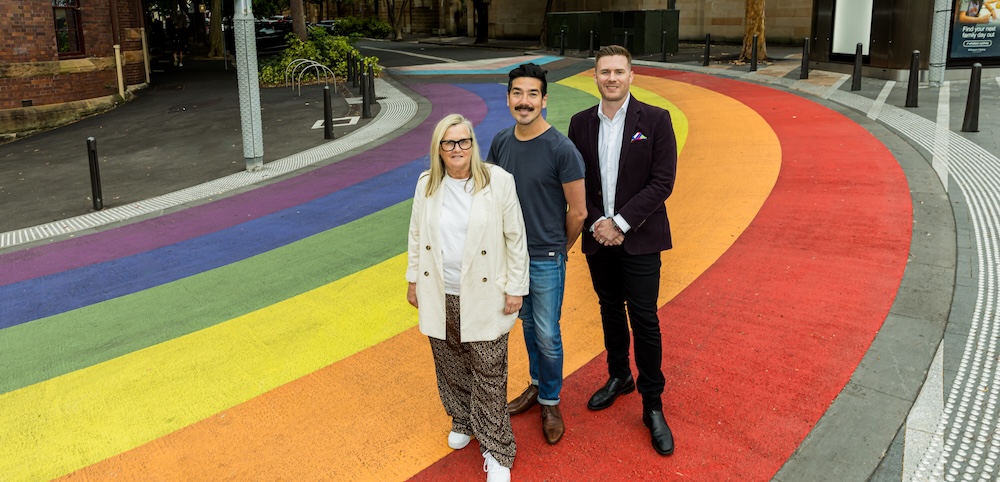
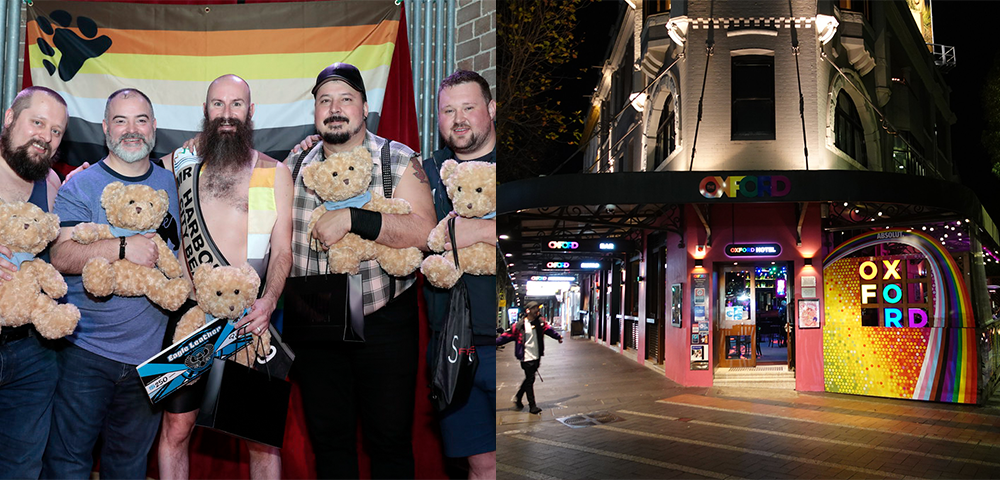
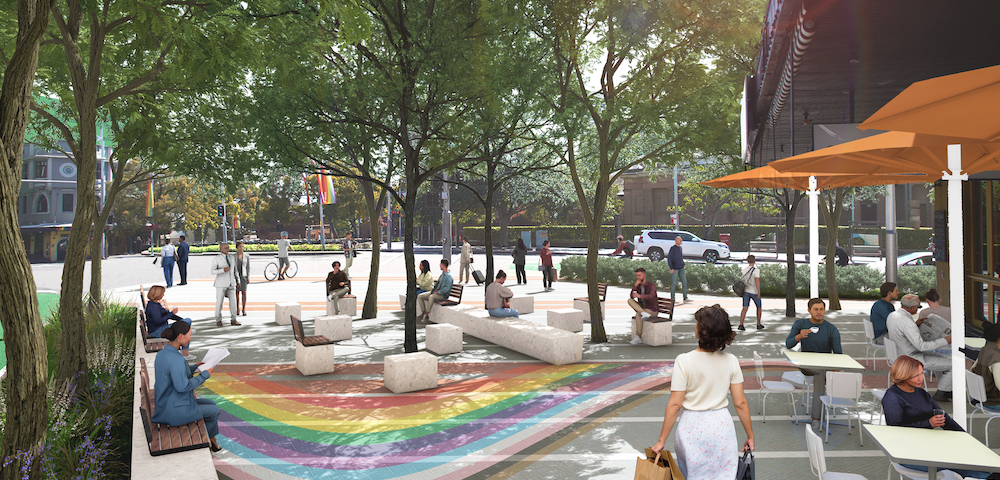
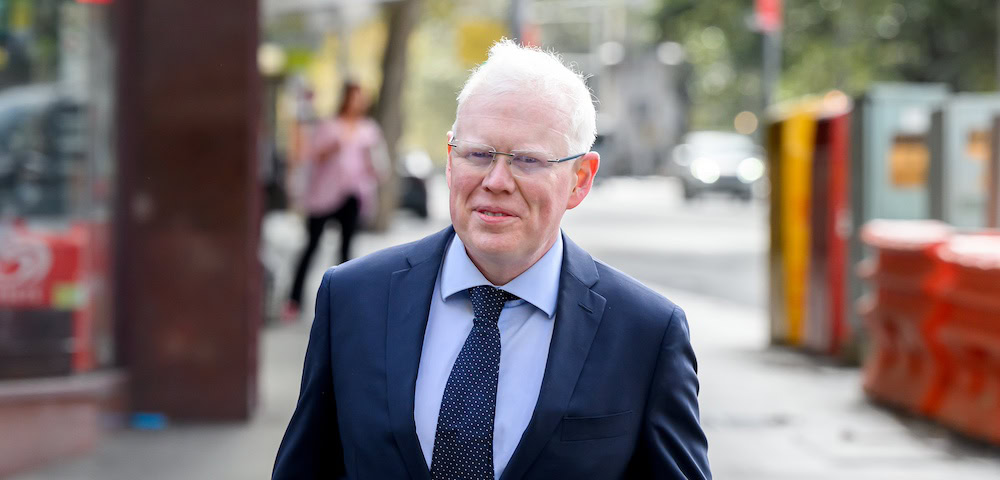
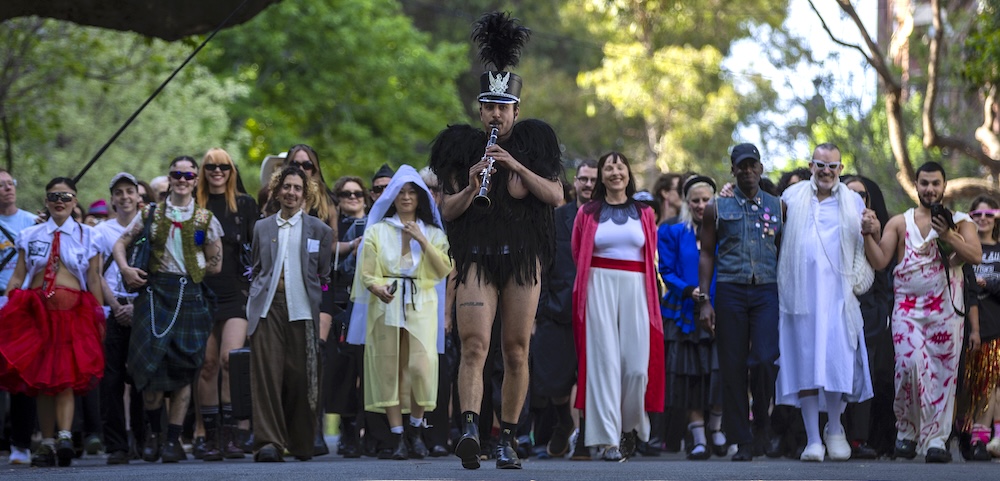
Readers may also be interested in seeing two short eyewitness accounts of the Stonewall riots published in the Village Voice on July 2 1969. The accounts are on http://www.villagevoice.com/2009-06-24/news/stonewall-at-40-the-voice-articles-that-sparked-a-final-night-of-rioting/. The author of one of the 1969 accounts has also given his recollections in a recent New York Times article (http://www.nytimes.com/2009/06/26/opinion/26truscott.html?_r=1).
Though your readers would be interested in the following.
OutHistory.org Publishes
Newly Obtained Stonewall Riot Police Reports:
Names Woman Arrestee and Three Men Arrestees
Recently obtained New York City Police Department reports reveal new, important details about what the police called an -œUnusual Occurrence at the Stonewall Inn — the rebellion provoked by a police raid on the gay bar that took place 40 years ago this month.
The newly revealed documents, created early on the morning of the rebellion’s start, June 28, 1969, provide an immediate, palpable sense of the event that has come to symbolize the beginning of the modern movement for lesbian, gay, bisexual, and transgender civil rights and liberation.
Reproduced in facsimile with transcriptions, nine pages of the NYPD records are published for the first time on OutHistory.org at: Stonewall Riot Police Reports, June 28, 1969
The importance of the documents published by OutHistory are discussed on the New York Times website at: http://cityroom.blogs.nytimes.com/2009/06/22/police-records-document-the-stonewall-uprising/
Highlights of OutHistory’s revelations include:
*Officer Charles Broughton of the 1st Division arrested Raymond Castro, Marilyn Fowler and Vincent DePaul, charging them with acting together to -œshove and kick the officer. This is the first time that Fowler and DePaul have been named and documented as riot participants. Fowler’s name is extremely significant, since no other woman’s arrest has so far been documented, and numbers of witnesses attributed the riot’s intensifying to the arrest and resistance of an unnamed butch lesbian. (Castro is named as a participant in David Carter’s Stonewall: The Riots That Sparked the Gay Revolution. OutHistory.org also includes: Raymond Castro Interviewed by Jonathan Ned Katz: June 16, 2009.)
*Police officer Charles Holmes of the 6th Precinct was treated at nearby Saint Vincent’s Hospital after being bitten on the right wrist by a Stonewall rioter. Biting has not earlier been documented as a Stonewall resistance tactic.
*Officer Andrew Scheu of the 6th Precinct charged Wolfgang Podolski with resisting arrest and with striking an -œofficer with [a] rolled newspaper causing him to fall to ground fracturing his wrist. This is the first documented reference to Podolski, a waiter or writer (the report is unclear), as a riot participant. A rolled up newspaper has not earlier been documented as a resistance weapon.
*Officer Gail Lynch, of the 5th Precinct, charged that Thomas Staton interfered with an officer making an arrest -œby throwing assorted objects [and] while with others did become very loud and refused to comply. Staton has not earlier been named and documented as a riot participant. Lynch has not earlier been named as one of the women police officers at the scene. The newly obtained records for the first time provide the full names of several other officers involved in the riot.
*An unfortunate Volkswagen owner complained to officer Robert Hansen of the 6th Precinct that her car, parked near the riot scene, had been -œstomped on during the disturbance and sustained damage to the roof, hood, and rear.
*The reports also document the charge by Officer Gilbert Weisman of the 6th Precinct that David Van Ronk, -œActor (he was actually a well-known folksinger) -œDid assault the officer about the face with an unknown object. The heterosexual Van Ronk was arrested, handcuffed, taken into the Stonewall, and later taken away in a patrol wagon. He eventually pleaded guilty to -œharassment, a violation, and was later sued by Weisman for assault, and paid the officer a fine.
Seven pages of these NYPD records were obtained in May 2009 by Jonathan Ned Katz, Director of OutHistory.org, in consultation with historian David Carter, and two additional pages were obtained in 1988 by the late Michael Scherker, under the New York State Freedom of Information Law. In the documents obtained by Katz, for the first time the names of those arrested are not blacked out, providing the public and historians with important new evidence about the rebellion’s participants. None of the nine NYPD reports made available on OutHistory.org have earlier been published.
Katz asks that anyone with any knowledge of the persons arrested or charged, or any knowledge of the police officers named, contact him at: outhistory@gc.cuny.edu.
Any information about arrestees Vincent DePaul, Marilyn Fowler, Wolfgang Podolski, and Thomas Staton would be -œgreatly appreciated, says Katz, and any data on Marilyn Fowler is of -œspecial interest.
To celebrate the 40th anniversary of the Stonewall resistance, OutHistory.org is also republishing novelist and essayist Edmund White’s eyewitness letter about the riots, written to friends a few days after the rebellion, and playwright Martin Sherman’s recollection of the resistance. These documents have not before been available on line. See: Edmund White: Letter to Ann and Alfred Corn, July 8, 1969 and Martin Sherman: “A Hot Night in June,” November 1994.
OutHistory.org is the freely accessible, community-created website on lesbian, gay, bisexual, transgender, queer, and, yes, heterosexual history. It is produced by the Center for Lesbian and Gay Studies at the City University of New York Graduate Center under a grant from the Arcus Foundation and donations from individuals.
OutHistory.org is unique in encouraging members of the LGBTQ and heterosexual communities to help write the histories of those communities. -œFight Against Forgetting is one of the website’s mottos. Major LGBTQ scholars also contribute to the site. OutHistory is also holding a Since Stonewall Local Histories Contest in which users are encouraged to create an exhibit about the history of LGBTQ their town, village, county, city or state over the past 40 years.
Contacts:
Jonathan Ned Katz
Director, OutHistory.org
jnk123@mac.com
Lauren Gutterman
Coordinator, OutHistory.org
outhistory@gc.cuny.edu